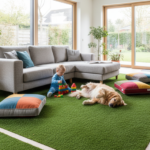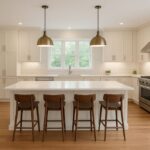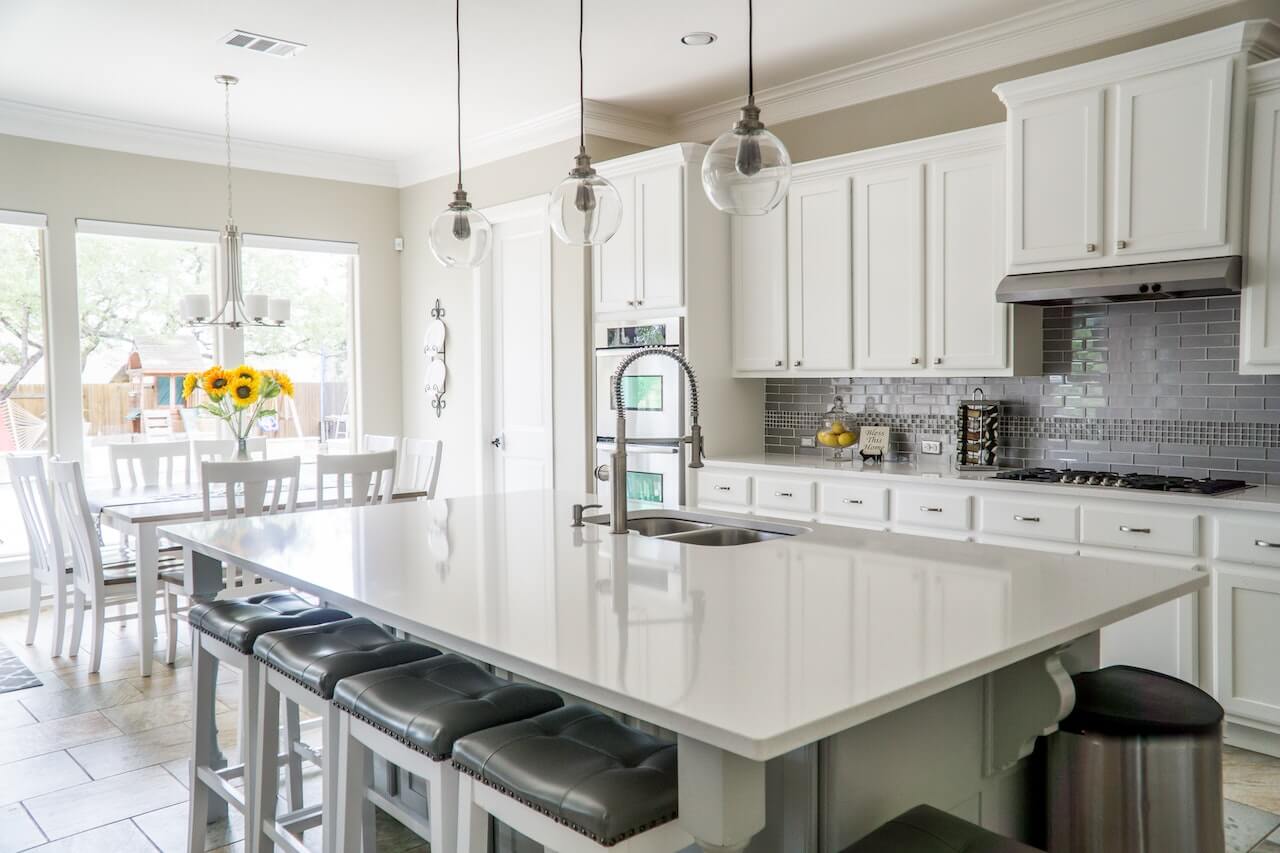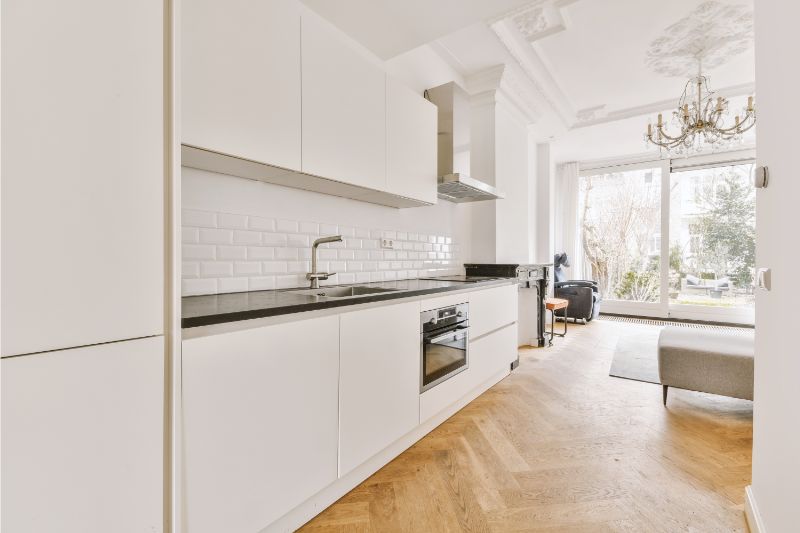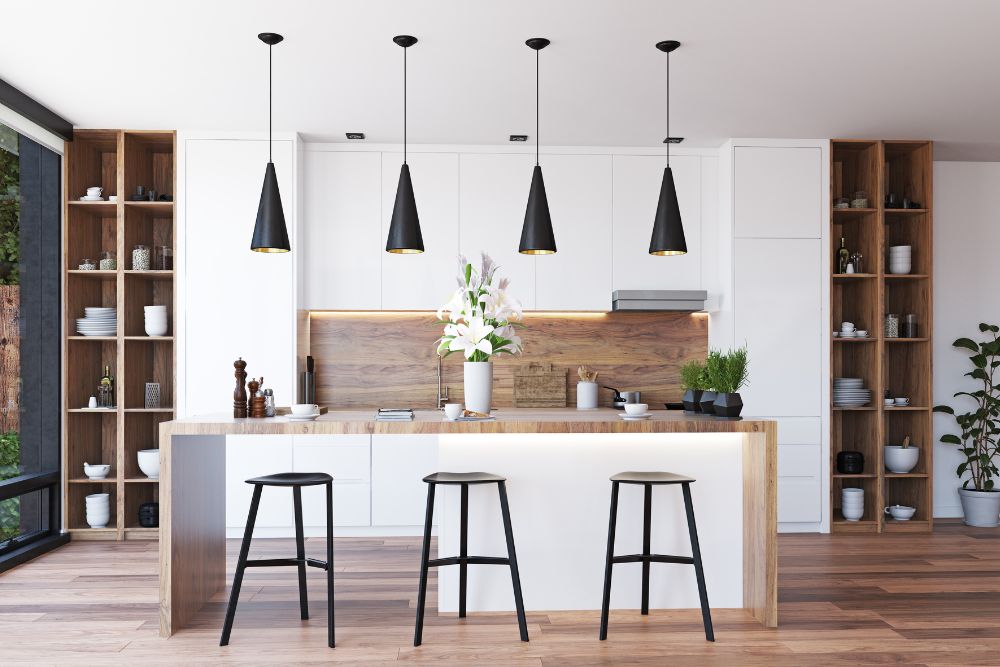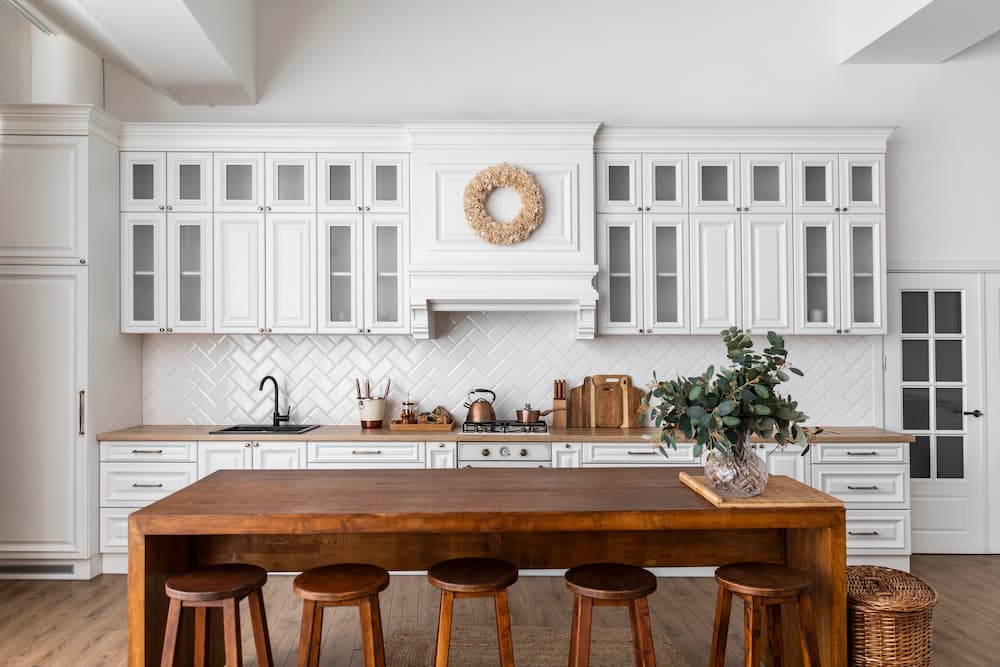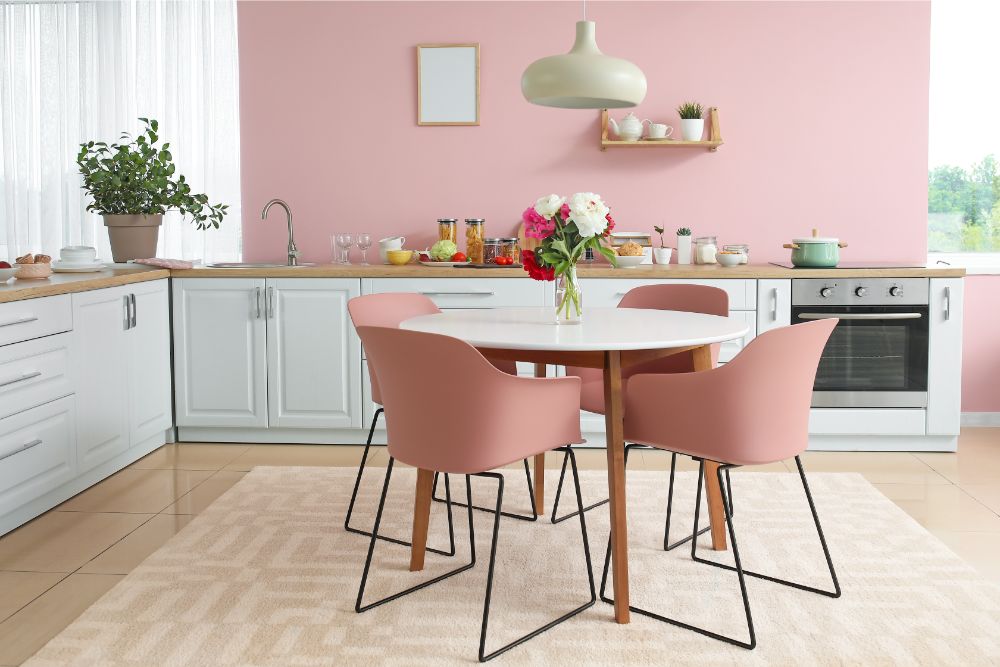Are you ready to explore the cutting-edge ideas and styles shaping modern kitchens?
From innovative technology to sleek aesthetics, we’ll dive into the exciting world of kitchen design trends together.
Get ready to discover tips, examples, and expert advice to inspire you to create a truly modern kitchen.
Let’s embark on this journey and explore the forefront of kitchen design!
1. Minimalism and Clean Lines
Minimalism and clean lines are design principles that emphasize simplicity, functionality, and a clutter-free aesthetic.
Minimalism is about stripping away unnecessary elements and focusing on what is essential. Kitchen design involves creating a space that is visually uncluttered and free of excess ornamentation. The key features of minimalism include the following:
Clean lines refer to using straight, unbroken lines in the design. This principle promotes simplicity and clarity, eliminating unnecessary curves or ornate details. In a kitchen with clean lines:
Minimalism and clean lines in kitchen design aim to create a sense of calmness, simplicity, and functionality. These design principles help achieve a modern, uncluttered, visually appealing kitchen space by focusing on essential elements and eliminating excess.
2. Neutral Color Palettes
Neutral color palettes in kitchen design consist of soft, subtle, and not overly saturated hues. These colors create a versatile, timeless backdrop that other design elements can easily complement. Here are the critical aspects of neutral color palettes:
Shades of white are a common choice in neutral kitchens. Grays can create a sophisticated and elegant ambiance from light gray to charcoal. Neutral shades like beige and tan evoke a sense of warmth and coziness.
While neutral color palettes predominantly consist of lighter shades, adding accents of black can create contrast and visual interest.
Neutral color palettes offer several benefits in kitchen design. They create a versatile backdrop that allows other design elements, such as materials, fixtures, or decor, to stand out.
Neutrals also have a timeless appeal, making them less likely to go out of style over time. Additionally, neutral colors promote a sense of calmness and can make the kitchen space feel open, airy, and welcoming.
3. Mixed Materials
Mixed materials in kitchen design refer to the intentional combination of different textures, finishes, and materials to create visual interest and add depth to the space. This approach allows for a unique and personalized kitchen design.
When working with mixed materials, striking a balance and ensuring the combination is cohesive and harmonious is essential.
Consider your kitchen’s overall style and color palette to guide your choices and create a visually appealing result.
Mixing materials allow you to customize your kitchen design and create a space that reflects your style and preferences.
4. Smart Appliances and Technology
Smart appliances and technology in the kitchen refer to integrating advanced features and connectivity that enhance convenience, efficiency, and functionality. These innovations can transform how you interact with your kitchen and streamline various tasks.
Intelligent appliances include smart refrigerators with touchscreens and internet connectivity, kitchen anti-fatigue mats, voice-controlled ovens, microwaves, intelligent dishwashers with advanced sensors, and coffee makers that can be programmed remotely.
While smart appliances and technology offer numerous benefits, it’s essential to consider compatibility, security, and long-term support when integrating them into your kitchen.
5. Open Shelving
Open shelving is a concept in which kitchen storage is displayed openly on shelves instead of concealed behind cabinet doors. It involves removing upper cabinet doors or incorporating shelves instead of traditional cabinets.
Open shelving offers several advantages and can create a unique and stylish look in your kitchen. When implementing open shelving, it’s essential to balance functionality and aesthetics.
Consider the overall design style of your kitchen, the items you want to display, and how they will harmonize with the rest of the space.
You can create a visually stunning and functional focal point in your kitchen by carefully curating and organizing your open shelves.
6. Statement Lighting
Statement lighting refers to eye-catching, bold light fixtures that serve as a focal point and significantly impact a space. In kitchen design, statement lighting can transform the overall look and feel of the room.
Examples of statement lighting in the kitchen include oversized pendant lights, chandeliers, cluster or linear fixtures, and uniquely sculptural pieces. These fixtures can add drama, elegance, or a touch of personality to the space, elevating the overall design.
When selecting statement lighting for your kitchen, consider the room’s scale, the ceiling’s height, and the balance with other design elements. It’s essential to find a fixture that not only enhances the visual appeal but also fits harmoniously within the overall design scheme of your kitchen.
7. Bold Backsplashes
Bold backsplashes refer to the use of vibrant colors, patterns, or unconventional materials in a kitchen backsplash design. They serve as a focal point and make a bold visual statement in the kitchen.
Bold backsplashes include:
- Brightly colored mosaic tiles.
- Patterned ceramic or porcelain tiles.
- Textured stone slabs.
- Even custom-painted murals.
These choices can transform the kitchen, adding character and a strong design element.
When incorporating a bold backsplash, it’s essential to consider the overall design style of the kitchen and ensure that the backsplash complements the rest of the space. You can create a visually stunning and personalized kitchen that reflects your style and taste by carefully selecting colors, patterns, and materials.
8. Integrated Appliances
Integrated appliances, or built-in or panel-ready appliances, are designed to seamlessly blend with the surrounding cabinetry and create a cohesive and streamlined look in the kitchen.
Unlike freestanding appliances, integrated appliances are specifically designed to be concealed behind custom cabinet panels or integrated into cabinetry for a cohesive and uninterrupted aesthetic.
Integrated appliances provide a seamless and cohesive look in the kitchen, creating a visually pleasing and harmonious space. They offer a range of options for customization, allowing you to match them with your preferred cabinet style and finish.
Whether you prefer a sleek and minimalist design or a traditional and timeless aesthetic, integrated appliances can help you achieve the desired look while maintaining the functionality of your kitchen.
9. Large Kitchen Islands
Large kitchen islands are spacious and multifunctional surfaces located at the center of the kitchen. They serve as a focal point and provide additional countertop space, storage, and seating.
Large kitchen islands have become increasingly popular in modern kitchen designs due to their versatility and ability to enhance the space’s aesthetic appeal and functionality.
When incorporating a large kitchen island, it’s essential to consider the available space in your kitchen and ensure proper traffic flow around it. The island’s size and layout should be proportional to the kitchen to maintain a balanced and functional design.
Large kitchen islands offer a range of benefits, including increased workspace, storage capacity, seating options, and design versatility. They enhance the functionality and aesthetics of the kitchen, serving as a central hub for various activities and creating a welcoming and efficient culinary environment.
10. Eco-Friendly Design
Eco-friendly design, also known as sustainable or green design, refers to creating spaces that minimize negative environmental impacts while promoting energy efficiency, resource conservation, and healthy living.
In kitchen design, eco-friendly principles can be applied to various aspects, including materials, appliances, lighting, water usage, and waste management.
Eco-friendly kitchen design aims to create a space that is not only environmentally responsible but also promotes a healthier lifestyle. By considering sustainable materials, energy efficiency, water conservation, waste management, and indoor air quality, an eco-friendly kitchen can contribute to a more sustainable and greener future.
Conclusion
The latest trends in kitchen design focus on simplicity, functionality, and sustainability. Modern kitchens are becoming more efficient, stylish, and environmentally conscious, from minimalism and clean lines to incorporating eco-friendly materials and technology.
Neutral color palettes, mixed materials, statement lighting, and integrated appliances are just some of the trends shaping how we design and use our kitchens today.
By incorporating these trends into your kitchen, you can create a space that looks beautiful, functions efficiently, and promotes a healthy lifestyle.


